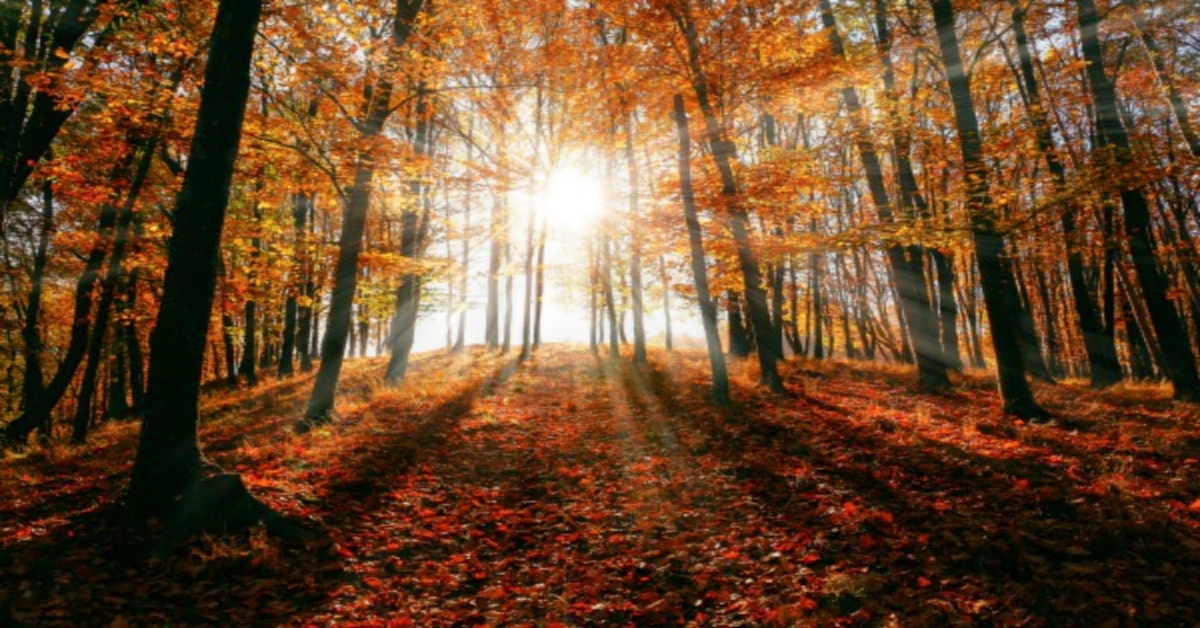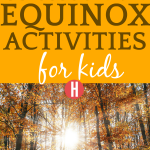These fall equinox lesson plans and activities cover what is the fall equinox and what does fall equinox mean? Here’s how to celebrate the autumn equinox with children for a fun fall activity!

FALL EQUINOX LESSON PLANS AND IDEAS
The fall equinox is sometimes called the autumn equinox (or autumnal equinox) and is an interesting learning opportunity for kids! Here’s fall equinox explained and ideas for children…
How do you celebrate the fall equinox?
Fun ways to have a special autumn equinox with kids:
- Make a harvest festival feast with local farm or famers’ market food items as part of your autumnal equinox celebration ideas
- Make a gratitude list
- Go on a nature hike
- Learn about fall equinox rituals around the world
- Decorate with autumn themes like a wreath for your door
- Talk about your gratitude of nature and the earth
- Do fall themed crafts from items found in nature
- Press some fall leaves and then use them to decorate
- Enjoy warm tea while sitting outdoors
- Read books about fall
- Learn why leaves change in the fall as outdoor autumn equinox children’s activities
- Keep a nature journal or nature drawing journal
- Read or write poems for fall equinox
- Do some leaf and bark rubbings and frame them
- Make some fall equinox recipes and enjoy some fall equinox foods
- Sing fall equinox songs
- Have a bonfire and outdoor fall equinox dinner (one of the traditional fall equinox party ideas)
DON’T MISS OUR FULL LIST OF FALL EQUINOX LESSONS AND AUTUMN IDEAS BELOW!
KEEP SCROLLING FOR FALL EQUINOX HOLIDAY CELEBRATIONS!
Let’s also cover a fall equinox definition and meaning of fall equinox that will help kids better understand.
So…
What is an equinox and when do they occur?
What Is Fall Equinox for Kids?
How do you explain Autumn Equinox to kids?
Fall equinox is when the sun crosses into the earth’s equator and indicates the beginning of the fall in September in the Northern hemisphere and the beginning of spring in the Southern hemisphere. When the equinox happens, the length of day and night are approximately equal (12 hours each).
During this time, the sun is exactly above the planet’s equator, or the imaginary line around the middle of the earth (or any planet) that divides it into a Northern and Southern Hemisphere.
This means that every place on the planet on that one day experiences the same amount of daytime and nighttime!
This is a biannual occurrence, meaning that it happens twice each year (during the autumnal equinox in the fall and then again during the vernal equinox in the spring).
FUN FACT:
The dividing line between the areas that are in daytime and the areas that are in nighttime is called “the terminator.”
When Is Fall Equinox?
When is the fall equinox in the northern hemisphere? Fall Equinox Date for Fall Equinox 2022: The fall equinox 2022 is Thursday, September 22, 2021, at 9:03 p.m.
When is the first day of fall?
The first day of fall is the fall equinox. In 2022, it’s on September 22nd. This marks the first day of fall in the Northern Hemisphere, but the first day of Spring in the Southern Hemisphere!
YOU’LL ALSO LIKE: Spring Equinox Lesson Plans
What is special about the fall equinox?
Fall equinox is special because it’s a day when there is exactly 12 hours of daylight and 12 hours of night. After, the sun rises later and the night begins to fall earlier each evening. It is seen as the start of dormancy, hibernation, and rest.
FUN FACT:
The fall equinox meaning comes from the Latin word aequinoctium, meaning “equal night-time.”
What are the 4 equinoxes?
There are equinoxes and solstices that include:
- Spring equinox (Vernal Equinox), that marks the beginning of spring
- Summer solstice, the longest day of the year and start of summer
- Autumnal equinox, marks the start of autumn
- Winter solstice, the shortest day of the year where there is more darkness than sunlight
TIP: Add the solstices to your autumnal equinox lesson plans when learning about fall equinox in northern hemisphere!
FUN FACT:
“The autumnal equinox will signal the coming of winter for the North and the start of summer for the southern part of the world.” -National Geographic
What is equinox phenomenon?
An equinox happens every six months—once in the Spring with the vernal equinox and once in the fall with the autumnal equinox. They occur every year and happen on every planet in the solar system!
There are only two times of the year when the Earth’s axis is tilted neither toward nor away from the sun, resulting in a ‘nearly’ equal amount of daylight and darkness at all latitudes. These events are referred to as Equinoxes.
History.com goes on to explain:
As the Earth orbits the sun, it is tilted at a fixed angle. For half the year, the North Pole is tilted slightly toward the sun, bringing longer days to the Northern Hemisphere, while the South Pole is tilted slightly away from the sun, bringing fewer hours of sunlight to the Southern Hemisphere.
Then, as the Earth continues to move around the sun at its fixed angle, the North Pole is tilted slightly away from the sun. The equinox marks the point of the year where this transition occurs, and on the equinox the part of Earth closest to the sun is the equator, rather than places north or south.
Let’s talk about fall equinox vs solstice…
What is the difference between equinox and solstice?
Equinox happens when the daytime and nighttime hours are almost exactly the same length of time (“equal”).
There are two equinox happenings—fall and spring.
Solstice happens when the sun reaches the highest point (the longest day of the year), or the lowest point (the shortest day of the year).
There are also two solstices—one for summer and one for winter.
YOU MAY ALSO LIKE:
Current Full Moon Schedule and 22 Moon Activities for Kids
Is the fall equinox pagan?
The equinox is a solar system phenomenon, so it actually doesn’t have an association.
It’s just science!
However fall equinox history and equinoxes have been (and still are) the center of historical, religious, and cultural celebrations around the world throughout time, including fall equinox Native American traditions, fall equinox Celtic traditions, and more.
There are many different fall equinox traditions celebrations of all different belief systems and connections between fall equinox and spirituality for some people.
Since the September equinox marks the first day of autumn in the Northern hemisphere, it is often celebrated with the fall harvest (and has been for centuries) and is common in many cultures for fall equinox ritual ideas.
Also, since there were no clocks in ancient cultures like the Druids (England) and the Mayans, the sun, moon, and times like equinox and solstice were used to determine times of day and times of year.
Many scientists believe areas like Stonehenge were used to track happenings like the equinox and solstice.
Fall Equinox Customs and Traditions
Here are some examples of fall equinox traditions and customs for you to learn more about:
• Traditional fall harvest celebrations, giving thanks for bounties and harvest, making a fall harvest dinner for family and friends
• Michaelmas, the Christian feast of the Archangel Michael (September 29) to replace pagan rituals
• Return of the goddess Persephone in Greek mythology
• Chinese Harvest Moon Festival
Let us know if you have specific fall equinox rituals traditions and we’ll add them our list!
OK! On to the autumn equinox party ideas, how to celebrate fall equinox, and lessons for autumnal equinox!
![Learning About Fall Equinox [2019] and 17 Equinox Activities for Kids Learning About Fall Equinox [2019] and 17 Equinox Activities for Kids](https://homeschoolsuperfreak.com/wp-content/uploads/2019/08/17-Fall-Equinox-Activities-for-Kids.png)
OVER 17 Fall Equinox Lesson Plans, Activities and Projects for Kids
What do you do in the fall equinox?
Here are fall equinox worksheet ideas and fall equinox activities and autumn equinox ideas for lessons to do with the kids:
• Watch a video on the equinoxes (and fall equinox sun position etc.)
• Throw a fall harvest party for kids (or a neighborhood fall equinox party!) or harvest dinner with the last of garden vegetables
• Make a gratitude chain
• Review an animated graphic of the earth’s orbit.
• Study an image of the equinoxes.
• Learn about seasons on earth with this comprehensive lesson plan.
• Learn about the Kukulcan where a snake shadow “crawls” down the side of the pyramid during the equinoxes.
• Visit a local farm to understand fall harvest.
• Do a fall equinox activity.
• Learn about equinox celebrations from around the world.
• Learn about Stonehenge and the fall equinox.
• Watch a video about the solar system.
• Grab a solar system learning guide
• Read books about fall equinox like this and this
• Read books about the solar system and discuss how the planets align during solstices and equinox
Little Kids First Big Book Of Space
Can you really balance an egg on its end during the equinox?
Once last activity to cover is the fall equinox egg balance.
There are claims that during the equinoxes you can stand an egg on end because of the pull of equal gravity toward both the North and South.
However, the fall equinox egg balance is actually a myth.
You can, however, balance an egg (any day of the year!).
Watch this video on how to make an egg stand on its end.
LISTEN TO A FUN PODCAST ON SPRING EQUINOX AND BALANCING EGGS ON EQUINOX
WHAT FALL EQUINOX LESSON PLANS AND ACTIVITIES WILL YOU DO WITH KIDS?
STARTING HOME SCHOOL? CHECK OUT OUR HOW TO HOMESCHOOL GUIDE





